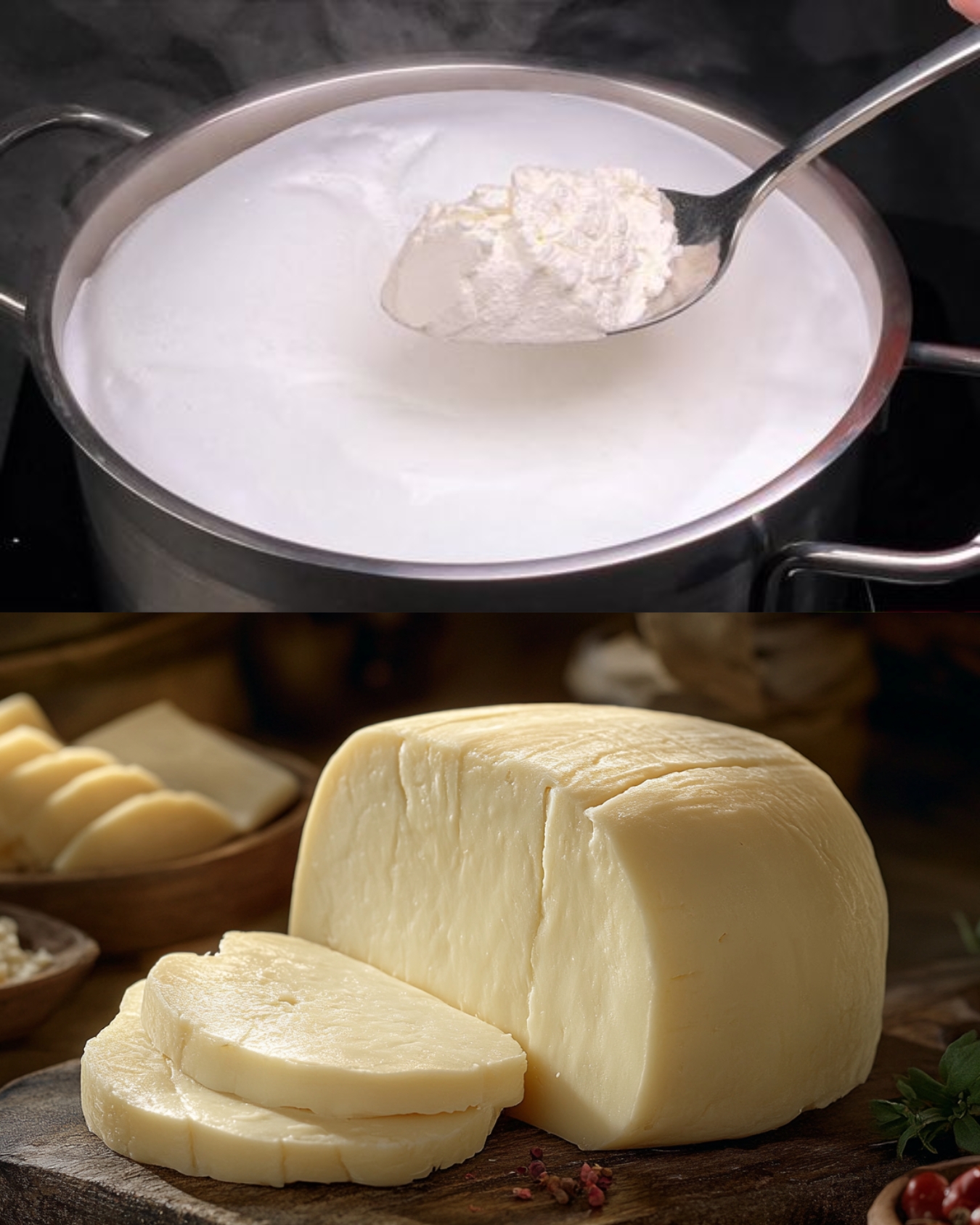Ingredients
For the Paneer
- 1 liter (4 cups) whole milk
- 2 tablespoons lemon juice (or substitute with white vinegar)
- 1/2 teaspoon salt
- 10 g butter (optional, for added creaminess)
Steps to Make Homemade Paneer
Preparation Time: 10 minutes
Cooking Time: 20 minutes
Total Time: 30 minutes
Servings: Makes approximately 200–250 grams of paneer
Step 1: Prepare the Milk
- Pour the milk into a large, heavy-bottomed saucepan and place it over medium heat.
- Stir occasionally to prevent the milk from scorching at the bottom.
- Heat the milk until it reaches a gentle boil. You will notice bubbles forming along the edges and steam rising from the surface.
Step 2: Curdle the Milk
- Reduce the heat to low. Gradually add the lemon juice or vinegar, one tablespoon at a time, while stirring gently.
- Within seconds, the milk will begin to curdle as the curds (solid parts) separate from the whey (liquid).
- If the milk does not curdle completely, add a little more lemon juice or vinegar and continue stirring.
Step 3: Strain the Curds
- Once the curds and whey have fully separated, remove the pot from heat and let it sit for 2–3 minutes.
- Line a colander or sieve with a clean muslin cloth or cheesecloth and place it over a bowl to catch the whey.
- Pour the curdled mixture into the cloth-lined colander. Allow the whey to drain completely.
Step 4: Rinse the Curds
- Gather the edges of the cloth to form a bundle, holding the curds inside.
- Rinse the curds under cold running water to remove any residual acidity from the lemon juice or vinegar.
- Squeeze the cloth gently to remove excess water, being careful not to break the curds.
Step 5: Shape and Press the Paneer
- Twist the top of the cloth to tighten the bundle and press the curds into a compact shape.
- Place the cloth-wrapped paneer on a flat surface and weigh it down with a heavy object, such as a pot filled with water, for 15–20 minutes.
- After pressing, unwrap the paneer from the cloth. Cut it into cubes, crumble it, or store it as is for use in recipes.
Why This Recipe is Timeless
Paneer is a testament to the beauty of simplicity in cooking. It transforms everyday ingredients like milk and acid into a soft, creamy delight that has stood the test of time. With its origins deeply rooted in Indian cuisine, paneer has become a global favorite for its ability to adapt to a wide variety of dishes.
The process of making paneer is more than just a culinary task; it’s a connection to tradition. For centuries, families have passed down this method, celebrating the skill of turning milk into a versatile ingredient. Paneer has also found its way into modern kitchens, embraced for its health benefits and adaptability to various diets, including vegetarian and keto lifestyles.
Whether served in traditional recipes like paneer butter masala or incorporated into fusion dishes like paneer wraps or paneer-stuffed quesadillas, it never goes out of style.
Nutritional Information (Per 100g)
- Calories: 265 kcal
- Protein: 18g
- Total Fat: 20g
- Carbohydrates: 3g
- Calcium: 150mg
FAQs
1. Can I make paneer with non-dairy milk?
No, paneer requires casein protein found in animal milk to curdle. Non-dairy alternatives like almond or soy milk will not work for this recipe.
2. Why didn’t my milk curdle?
The milk may not have been hot enough, or the acid (lemon juice or vinegar) may have been insufficient. Heat the milk to a rolling boil and add acid gradually, stirring until curds form.
3. How long does homemade paneer last?
Fresh paneer can be stored in the refrigerator for up to 3 days. If you wish to keep it longer, freeze it for up to 2 months.
4. Can I reuse the whey?
Yes! Whey is nutrient-rich and can be used to knead dough, make soups, or cook rice for added flavor and nutrition.
Tips for Perfect Paneer
- Use Fresh Milk: Whole milk provides the best yield and creaminess. Avoid ultra-pasteurized milk, as it may not curdle properly.
- Control the Acidity: Add lemon juice or vinegar gradually to avoid over-curdling, which can make the paneer grainy.
- Rinse Thoroughly: Washing the curds under cold water ensures that your paneer has no residual sour taste.
- Adjust Texture: For firmer paneer, press it longer; for softer paneer, reduce the pressing time.
- Add Butter for Creaminess: Mixing a small amount of butter into the curds before pressing results in a richer texture.
Storage Tips
Refrigeration
Submerge paneer in water and store it in an airtight container in the fridge. Change the water daily to keep it fresh for up to 3 days.
Freezing
Cut paneer into cubes and freeze in a single layer on a tray. Once frozen, transfer the cubes to a freezer-safe bag or container. Paneer can be frozen for up to 2 months. Thaw in the refrigerator before use.
Conclusion
Homemade paneer is not just an ingredient—it’s a reflection of culinary heritage and the art of transforming simple ingredients into something extraordinary. The satisfaction of creating fresh, preservative-free paneer at home is unparalleled, connecting you to a tradition that spans centuries.
The beauty of paneer lies in its versatility. Its mild flavor allows it to blend seamlessly into both traditional Indian dishes and modern global cuisine. From rich gravies to light salads, paneer complements and enhances flavors without overpowering them. Its high protein content and minimal ingredients also make it a favorite among health-conscious cooks.
In making paneer, you’re not only preparing an essential ingredient but also engaging in a timeless ritual that celebrates creativity and sustainability. Every step, from curdling the milk to shaping the cheese, offers a sense of accomplishment and connection to your food.
So whether you’re an experienced cook or a kitchen novice, this homemade paneer recipe invites you to explore, experiment, and enjoy the magic of cooking from scratch. It’s a culinary tradition worth preserving and passing on, ensuring its place at the heart of kitchens for generations to come.

